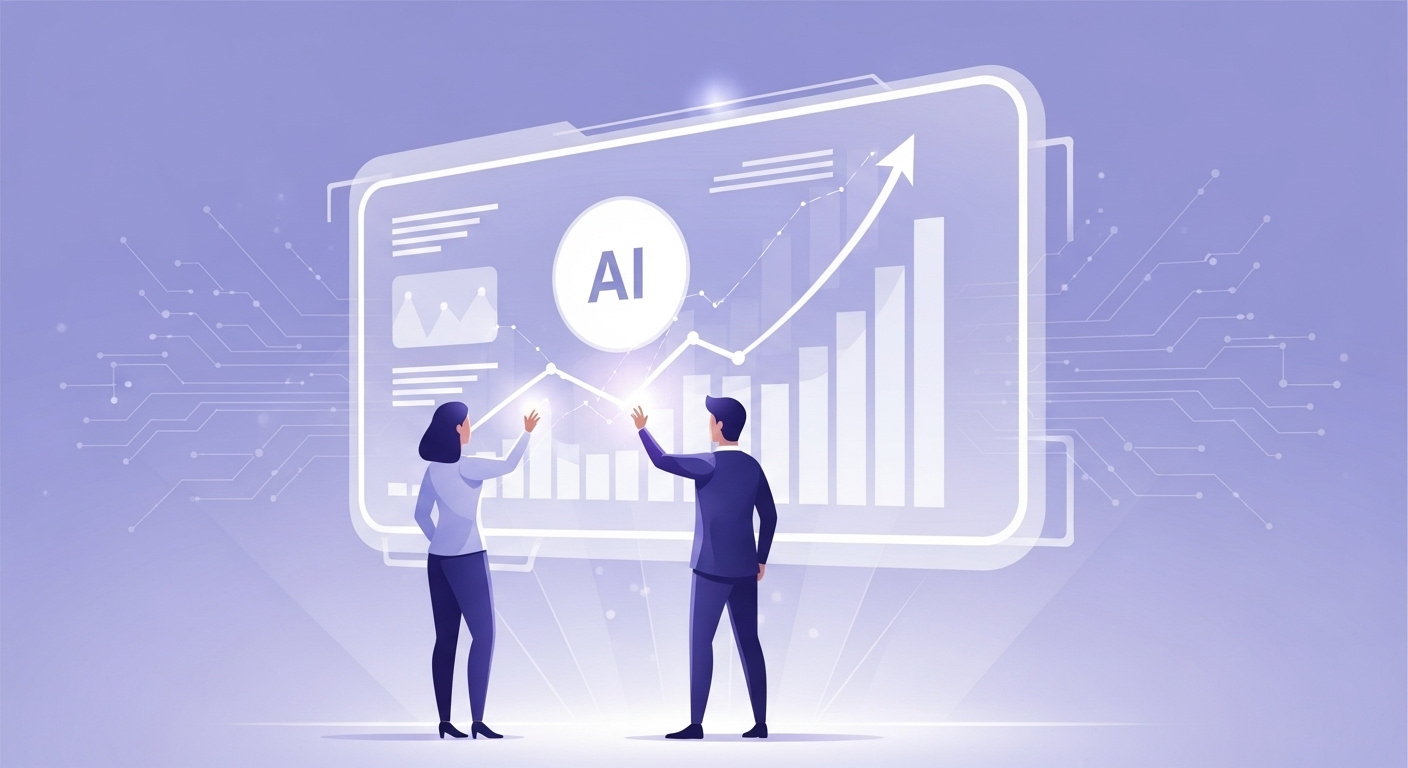Generative AI – Advantages, Risks & Best Practices

Advantages of Generative AI
1. Productivity and Efficiency Gains
One of the most obvious benefits: routine tasks can be automated.
- Marketing teams create texts, social media posts, or reports in minutes instead of hours.
- HR departments automatically generate job descriptions, applicant communications, or onboarding materials.
- In customer service, AI agents relieve staff by handling standard inquiries or pre-qualifying cases.
McKinsey studies show: companies using generative AI report up to 40% time savings on routine tasks.
2. Innovation and Creativity
Generative AI isn’t just efficient – it’s a creativity booster. It inspires new ideas, designs, and business models.
- In product development, it generates prototypes and simulations.
- In marketing, it delivers visual drafts or alternative slogans.
- In sales, it crafts personalized offer texts.
The real magic lies in the human–AI combo: while the AI produces thousands of options in seconds, humans pick the best one.
➡️ Result: Faster innovation cycles and significantly shorter time-to-market.
3. Cost Reduction
Generative AI allows equal or better results with fewer resources.
- Lower external agency costs for content or design.
- Less support staff for standard inquiries.
- Reduced effort in documentation and reporting.
According to Deloitte, companies report 20–30% cost savings from generative AI – depending on industry and use case.
4. Personalization in Customer Interaction
Modern customer experiences thrive on relevance. Generative AI can deliver highly personalized content in real time:
- In e-commerce, product recommendations are generated automatically based on user behavior.
- In banking, tailored investment suggestions are created.
- In healthcare, individualized therapy plans can be generated.
➡️ Result: Higher conversion rates, more customer satisfaction, and stronger loyalty.
5. Competitiveness and Scalability
Generative AI enables companies to scale without proportional headcount growth.
- A content team can suddenly produce not 10, but 100 articles per month.
- A support center can handle thousands of tickets simultaneously.
- An HR team can accelerate recruiting processes.
Generative AI thus becomes a strategic competitive advantage: those who adopt it pull ahead – those who wait risk falling behind.
Transition to the Challenges
In the second part of this article, we’ll look at the most critical risks – from bias and data protection to governance, dependency, and change management – and how companies can tackle them effectively.
Challenges of Generative AI
1. Data Quality and Bias
Generative AI is only as good as the data it’s trained on.
Bias (Distortion): If training data contains prejudice, the AI reproduces it. Example: A recruiting model might unintentionally disadvantage certain applicant groups.
False information: Models sometimes “hallucinate” – delivering answers that sound plausible but are wrong.
➡️ Risk: Companies may base decisions on flawed or biased information.
2. Data Protection & GDPR
A major concern in Europe: legal certainty.
If sensitive customer data is processed in US-based clouds, GDPR violations may occur. Without clear guidelines, employees might unknowingly enter confidential data into public tools.
➡️ Companies need clear governance, audit trails, and solutions that process data securely within the European legal framework.
3. Dependency on Technology Providers
Many organizations rely on a few major players (OpenAI, Anthropic, Google). This leads to:
- Lock-in effects: Switching costs are high.
- Uncertainty: Changes in pricing or API access can threaten business models.
➡️ That’s why more companies are turning to model-agnostic platforms like nuwacom.ai – to use the most suitable model for each use case.
4. Lack of Transparency and Explainability
Why an AI makes a decision is often unclear – the classic “black box” problem.
In compliance-sensitive areas, that’s a real issue if decisions can’t be justified.
Customers and regulators increasingly demand explainability.
➡️ Companies must invest in solutions that ensure traceability and auditability.
5. Change Management and Acceptance
Generative AI changes the way people work – and not everyone welcomes that.
- Fear of job loss.
- Distrust in automated processes.
- Lack of know-how when using AI tools.
➡️ Successful adoption requires transparency, training, and employee involvement.
6. Legal and Ethical Risks
- Copyright: When AI generates content, it’s often unclear who owns the rights.
- Ethical questions: Should AI be allowed to imitate artists’ creative works?
- Liability: Who’s responsible when AI makes a wrong decision?
➡️ Clear contracts, policies, and compliance frameworks are essential.
Best Practices for Companies
Start small, think big
Establish governance
Build a data strategy
Involve employees
Use model-agnostic platforms
Conclusion
Generative AI offers enormous potential: greater productivity, lower costs, and increased innovation. But the risks are just as real – from bias and data protection to user acceptance.
Companies that deliberately balance opportunities and challenges secure not just short-term efficiency, but long-term competitiveness.
The motto: Start now – but responsibly.
➡️ Book a Demo Experience live how nuwacom.ai makes generative AI secure, GDPR-compliant, and business-relevant.
➡️ Download Whitepaper “Implementing Generative AI Successfully – Harness Opportunities, Minimize Risks.”
FAQ
What are the biggest advantages of generative AI?
Productivity, cost reduction, personalization, and innovation.
Where lie the biggest risks?
Bias, data protection, lack of governance, and dependency on providers.
How can these risks be reduced?
Through governance, data strategy, modular platforms, and employee training.
Is generative AI suitable for every company?
Follow us on LinkedIn